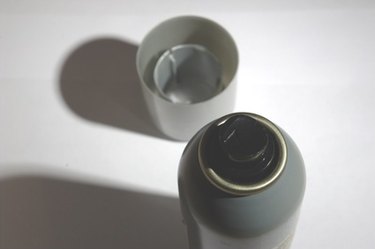
Airbrushing is a delicate art process that takes time and practice to learn. Airbrushing is mostly used on automobile detailing, customized motorcycle designs, T-shirt designs and small plastic and metallic model design. Airbrushing on metal requires the use of airbrush paint designed to adhere to metallic surfaces, as well as a variety of brush nozzle tips to create different lines and textures. Airbrushing metal is mostly like airbrushing other surfaces, except this may require more coats of paint, as well as priming or sanding the metal prior to painting.
Step 1
Prime the metallic surface with a primer paint coat. Paint adheres to paint easier, so the primer will act as a base and allow the paint to stick. For primed metal surfaces, use a fine .0004 steel wool pad to lightly scuff the metal primer off and expose the metal. Metals such as aluminum are usually primed with a coat of shiny metal plating; this can be sanded off by hand or by using a power sander with a metal sanding wheel.
Video of the Day
Step 2
Apply a background coat first and allow it to dry. Then apply tape to any areas of the metal that you don't want to paint first. If you're creating a flame design, paint the background flame color first, then allow it to dry and tape off the flame outline, leaving only negative space to apply the other background paint.
Step 3
Use a paint designed for metal surfaces and fill your airbrush with the desired color. All airbrushes vary slightly in operation, so consult your instruction manual on how to fill the brush with paint or secure the paint bottle to the brush. Start with your base coats first; then do your detailed coats.
Step 4
Hold the brush 3-inches away from the surface, depress the trigger to start the airflow, and drag the brush in a smooth steady motion. Apply only a thin coat at first; then allow it to dry before applying any other coats of paint. If the paint is still wet and you apply a second coat or different color, then it may run into the other paint and ruin the design.
Step 5
Allow your initial coats to dry; then reapply tape to areas that you don't want painted. You can cut shapes in tape, place them on areas of the metal and then paint. Remove the tape, and you'll have your design. This is just the same as using stencils, with negative space.
Video of the Day